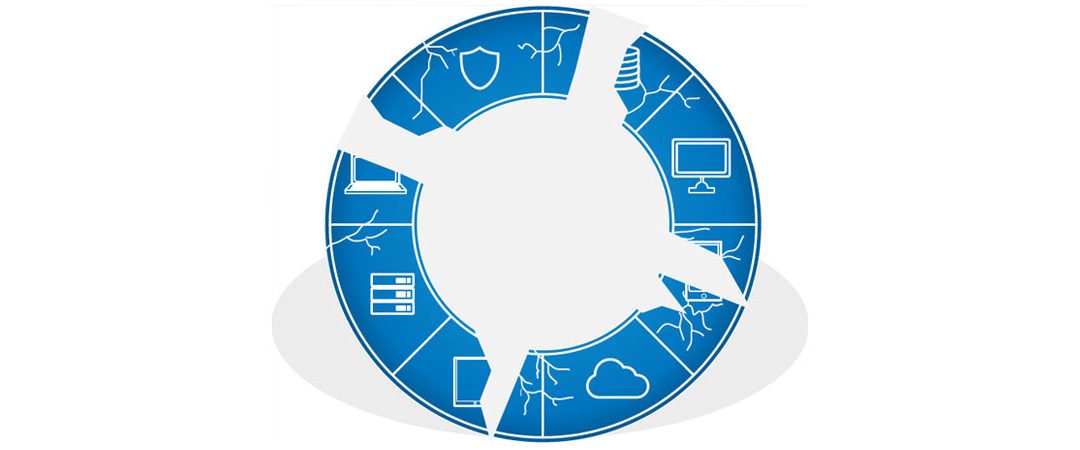A good IT asset manager is great at demonstrating the value the IT department provides to the organization as a whole. Effective IT asset management (ITAM) enables the IT department to make smarter decisions by optimizing equipment and creating positive forward momentum.
Accomplishing this however is no small task. In order to succeed, you must eliminate the potential for problems and surprises. As you track the repair and upgrade needs of your company’s high-ticket IT assets from procurement to disposal, robust policies and procedures are essential in maintaining the security of hardware and sensitive data.
IT asset managers on top of their game devise a dedicated ITAM strategy which drives the productivity of IT assets, while maintaining vigilant attention to mitigating the risk of a data breach.
The rapidly developing nature of IT assets and the ever-changing technological landscape require your IT asset manager to be adaptive and constantly evolving. Anything less can cause irreparable damage to your organization and your career path.
When was the last time you checked your procedures to ensure they are optimally designed and not clinging to any outdated ITAM practices? Now is as good a time as any. Ensure your plan is designed to avoid these four common mistakes made by IT managers.
1. Data is not being collected often enough
Other departments, with fixed assets, can get away with gathering data about those assets once in a while. The majority of fixed assets are purchased once and require less frequent upgrades than most IT assets.
IT assets are different. Data must be collected continually. When you don’t collect data often enough, lag develops which can violate certain requirements for licensing and upgrades.
Reports show that the daily management of IT assets falls short. In fact, 56% of IT managers verify asset location only once a year, while 10-15% verify only every five years.
This mistake can lead to damaged IT asset performance over time and significant compliance costs for your organization.
SOLUTION:
The Center for Internet Security reports that inventory and control of hardware and software are the most effective controls. IT asset management that is automated and centralized is critical in preventing a data breach or unauthorized access. The best solutions enable you to do the following:
- Track purchases and contracts for all asset types
- Generate and schedule reports based on purchase data
- Receive contract expiration reminders to ensure timely renewals
- Easily create reports to support IT audits
2. Conducting only manual audits
The main purpose of an audit is to maintain accurate records of assets and business processes. Audits can also test operational efficiency and drive employee accountability for asset-related activities.
When performed manually, these audits can consume valuable time and resources. Manual audits rarely provide adequate ROI and are much more susceptible to error.
SOLUTION:
If you haven’t done so already, consider implementing an automated IT asset comprehensive auto-discovery process. Asset discovery tracks performance of your assets and who is using them. You can monitor, in real-time, both performance and accountability. Although agentless options exist, hybrid models that combine agentless and agent-based tools drive results and are cost effective.
Be sure the system you select allows you to do the following:
- Use a PC or mobile device
- Customize the view
- Export data to a .CSV file or audit log
- Audit selected racks and easily see all devices, power units, and location information for each rack
- Define on-demand or scheduled reports to view right from your browser, or export to a spreadsheet
3. Allowing data to overwhelm and compromise cyber security
According to a recent study, fewer than half of all cyber security alerts are remedied because of the overwhelming amount of data being maintained. Are you one of the IT asset managers compromising cyber security as you disproportionately scale data capacity?
SOLUTION:
To ensure devices and data are secure, maintain an environment that is focused on security and best practices using the following checklist:
- Practice granular reporting to gain insight into daily operations of IT and infrastructure
- Create change history and password reports
- Ensure essential parties are participating in device and password expiration audits
- Consider software that manages contracts and licensing based on variables like user count, licensed CPUs, etc.
- Ensure malware detectors are installed
- Make sure data are encrypted against unauthorized users
- Confirm remedial strategies are in place in case of a security breach
4. Treating maintenance with a reactive mindset
Maintenance, for both hardware devices and software programs, must be proactive, timely, and ongoing. Anything less can result in poor performance, decreased efficiency, and significant delays in workflow.
SOLUTION:
Operating with a proactive mindset with regard to maintenance involves regular servicing for all devices according to the manufacturer’s guidelines and results in the following:
- Increased productivity
- Decreased likelihood of breakdowns
- Lowered risk of malware
- Prolonged useful life
Device42 offers the industry’s most comprehensive IT asset management capabilities, including powerful asset auto-discovery and configurable asset types to completely document all IT assets across your infrastructure deployment.

